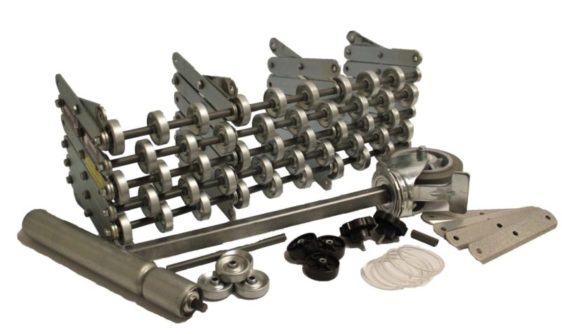
Conveyor Spare Parts: Keep Your Conveyor Up and Running
From production to supply, conveyors play a vital role in the productivity of many companies internationally. Whether an establishment is manufacturing car batteries, children’s toys or dinner rolls – they are likely to be using conveyors. Conveyors may be used to load/unload trucks, package trays of food/beverages or for assembly lines. No matter the purpose, it is necessary to keep them up-to-date with usual maintenance and to stock spare components in the event of unforeseen failure.
Company’s dependent on conveyor systems for daily operations, don’t always take proper care of them. So when a breakdown occurs the company can be out of commission for a long time. It usually causes production to come to a screeching halt, resulting in idle employees, late shipments and overall unsatisfied customers. Some of the ways you can stay vigilant are as follows:
- Keep spare parts on hand: When a conveyor breaks down, it can be costly, not only to fix but because of the system’s downtime. This results in reduced productivity, late shipments, and worker downtime. Sometimes a specific conveyor part can take weeks to get to you from the manufacturer, which is incredibly costly if that means weeks of reduced or halted productivity. Keeping a few extra key spare parts on hand just in case something goes wrong is a great way to prevent detrimental delay times. It is also important to organize these parts in bins with reference numbers indicating what conveyor or product it is.
- Be observant: It might seem silly, but watching and listening to your conveyor system can help determine inefficiencies. Hearing squeaking or rubbing is a sign that the system is not functioning properly, and seeing dust buildup below a belted conveyor could be a sign of excessive wear. Looking for signs like this and listening to your equipment from time to time can save you in repair costs down the road. Waiting for something to go wrong will result in expensive repairs and long delays. Another piece of the conveyor to be observant of is the temperature of motors and reducers, because drastic temperature changes are a sign of the system being overloaded. This could mean too much weight on the conveyor’s belt or rollers, or an inappropriate type of conveyor was being applied to perform a specific function.
- Keep proper and regular maintenance records: Making sure that proper maintenance logs are being kept on a regular basis will ensure your conveyor system lasts as long as possible. Just like getting maintenance checks and oil changes extend the useful life of that vehicle, an up to date log will do the same thing for a conveyor. If multiple shifts of workers use the same equipment, the logs must stay up to date to ensure accuracy. If your conveyor ever fails to work when in regular use, your up to date maintenance records will help your case when you approach the manufacturer.
- Properly train employees: Don’t just stick any random worker on the conveyor line. They must be properly trained to safely operate the conveyor system and to know what warning signs to watch out for. They are essentially the first line of defense of noticing a potential problem or concern, so proper training will save money in costly repairs down the road.
Conclusion
These are just a few tips for proper care of your conveyor system. Conveyors, new or used, are a costly investment, so it is worth the time and effort to maintain it well. You wouldn’t let your car go 10,000 miles without an oil change, so don’t let your conveyor system go without regularly scheduled maintenance checks. When you work with Conveyors & Drives, Inc. we will make sure you are using the proper conveyor for your application. On top of that, we will educate you on how to properly maintain your system.





